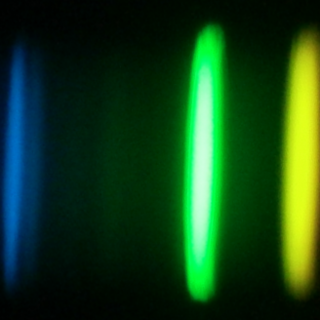Bibcode
Fleming, S. W.; Mahadevan, Suvrath; Deshpande, Rohit; Bender, Chad F.; Terrien, Ryan C.; Marchwinski, Robert C.; Wang, Ji; Roy, Arpita; Stassun, Keivan G.; Allende Prieto, C.; Cunha, Katia; Smith, Verne V.; Agol, Eric; Ak, Hasan; Bastien, Fabienne A.; Bizyaev, Dmitry; Crepp, Justin R.; Ford, Eric B.; Frinchaboy, Peter M.; García-Hernández, D. A.; Elia García Pérez, Ana; Gaudi, B. Scott; Ge, Jian; Hearty, Fred; Ma, Bo; Majewski, Steve R.; Mészáros, Szabolcs; Nidever, David L.; Pan, Kaike; Pepper, Joshua; Pinsonneault, Marc H.; Schiavon, Ricardo P.; Schneider, Donald P.; Wilson, John C.; Zamora, O.; Zasowski, Gail
Bibliographical reference
The Astronomical Journal, Volume 149, Issue 4, article id. 143, 17 pp. (2015).
Advertised on:
4
2015
Citations
22
Refereed citations
19
Description
The Kepler mission has yielded a large number of planet candidates from
among the Kepler Objects of Interest (KOIs), but spectroscopic follow-up
of these relatively faint stars is a serious bottleneck in confirming
and characterizing these systems. We present motivation and survey
design for an ongoing project with the Sloan Digital Sky Survey III
multiplexed Apache Point Observatory Galactic Evolution Experiment
(APOGEE) near-infrared spectrograph to monitor hundreds of KOI host
stars. We report some of our first results using representative targets
from our sample, which include current planet candidates that we find to
be false positives, as well as candidates listed as false positives that
we do not find to be spectroscopic binaries. With this survey, KOI hosts
are observed over ∼20 epochs at a radial velocity (RV) precision of
100–200 m s‑1. These observations can easily
identify a majority of false positives caused by physically associated
stellar or substellar binaries, and in many cases, fully characterize
their orbits. We demonstrate that APOGEE is capable of achieving RV
precision at the 100–200 m s‑1 level over long
time baselines, and that APOGEE’s multiplexing capability makes it
substantially more efficient at identifying false positives due to
binaries than other single-object spectrographs working to confirm KOIs
as planets. These APOGEE RVs enable ancillary science projects, such as
studies of fundamental stellar astrophysics or intrinsically rare
substellar companions. The coadded APOGEE spectra can be used to derive
stellar properties (Teff, log g) and chemical abundances of
over a dozen elements to probe correlations of planet properties with
individual elemental abundances.
Related projects

Nucleosynthesis and molecular processes in the late stages of Stellar Evolution
Low- to intermediate-mass (M < 8 solar masses, Ms) stars represent the majority of stars in the Cosmos. They finish their lives on the Asymptotic Giant Branch (AGB) - just before they form planetary nebulae (PNe) - where they experience complex nucleosynthetic and molecular processes. AGB stars are important contributors to the enrichment of the
Domingo Aníbal
García Hernández

Chemical Abundances in Stars
Stellar spectroscopy allows us to determine the properties and chemical compositions of stars. From this information for stars of different ages in the Milky Way, it is possible to reconstruct the chemical evolution of the Galaxy, as well as the origin of the elements heavier than boron, created mainly in stellar interiors. It is also possible to
Carlos
Allende Prieto